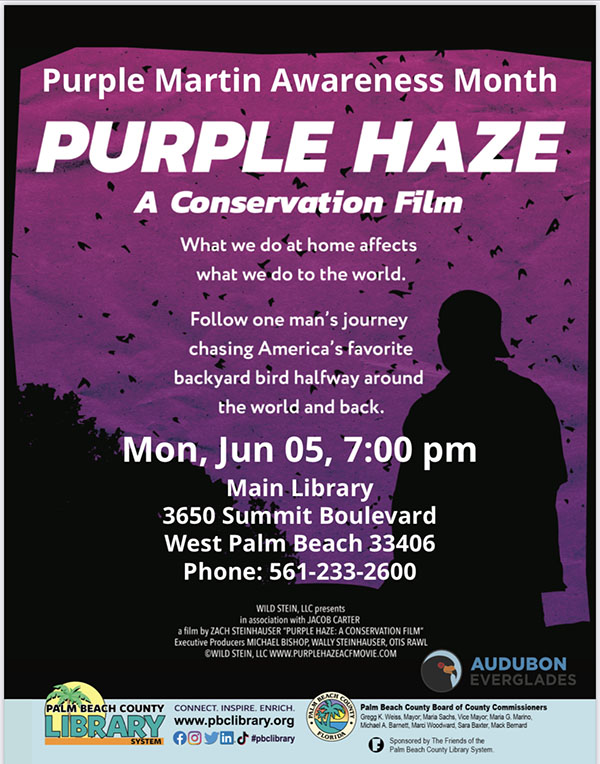Capt. Zach Steinhauser has partnered with Audubon Everglades for a screening of Purple Haze: A Conservation Film, a documentary on the purple martin and bird conservation.
Purple Haze will be presented on Monday, June 5 at the Palm Beach County Main Library (3650 Summit Blvd.). The event will begin at 7 p.m. and will end at approximately 9 p.m.
A unique phenomenon that happens annually on Bomb Island in Lake Murray, S.C., has drawn scientists and bird enthusiasts since its discovery in 1988. One of them, Steinhauser, a South Carolina local, spent five years researching and following the purple martins to put together the documentary about the local sensation.
Steinhauser is a United States Coast Guard licensed captain who has been all over the United States and Brazil to study this unique songbird. He hopes that his film, Purple Haze: A Conservation Film, will educate and inspire others to take steps and help preserve these gentle, beautiful songbirds for generations to come.
On May 6, Palm Beach County Mayor Gregg Weiss issued a proclamation declaring May Purple Martin Awareness Month in Palm Beach County. Purple martins have a unique relationship with humans, as they nest exclusively in man-made housing. If humans stopped supplying suitable habitats, they would likely disappear as a breeding bird. Attendees will also find out how to build or create their own “backyard purple martin colony” at the film’s debut. These unique homes for purple martins will keep these beloved songbirds soaring the skies of South Florida.
As many as 750,000 purple martins gather each evening in July and August to feed, socialize and rest on Bomb Island. The roost is so large that it has been seen on radar and is the largest in North America. In the morning, they fly off, as far as 100 miles away, to prepare for their migratory flight to South America in late August.
While not endangered, purple martins have faced about a 40 percent decline as a species in the last 50 years because people have steadily stopped providing nesting habitat for them.








